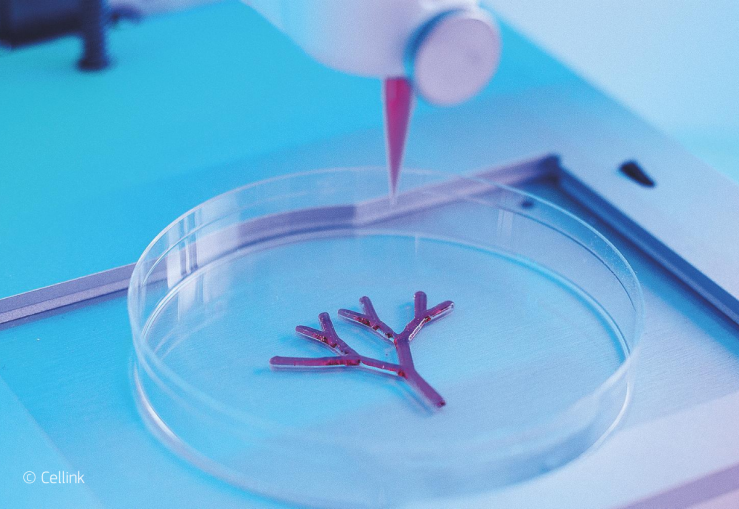In 2015, Cellink shook up the industry with its breakthrough universal bio ink, the very first on the market to be commercialised. The Gothenburg-based company offered a 3D printable bio ink, which is used to print organs and tissues. This allows medical tests to be carried out on human tissue instead of animals or humans. Here’s how it all started.
When the bioprinting industry was in its early days, a few companies were creating very complex and expensive bioprinters for a few research groups around the world. The field was very focused on the hardware, but no one was making the actual ink or material to print organs. During the FTI Project, Cellink developed tissue models for toxicology applications and realised that many researchers were having difficulties developing their cancer models for different drug tests. The company decided to transform this challenge into a new business opportunity, revolutionising MedTech with the world’s most cost-effective bioprinter, priced at $4,999.
“The innovation behind the printer is using cost-effective components and software algorithms to overcome mechanical challenges that the expensive printers had. In turn, that enabled us to become super user-friendly, but also very advanced”, explained Erik Gatenholm, CEO of Cellink.
The European Innovation Council followed the Swedish company's exponential growth, providing both Fast Track to Innovation (FTI) and EIC Accelerator Grants. After the FTI, the company jumped into the TumourPrint project, funded by the EIC Accelerator, and brought a new type of technology to the market. BIO X6 is a new six-printhead bioprinting system that has the capability to print cancer tumours for researchers. The CEO Erik Gatenholm recognises the importance of these grants to achieve these results and disrupt the field.
“Between 2017 and 2018, we developed our company tremendously, and I think the fact that we received FTI and EIC Accelerator Funding contributed immensely to this. We learned a lot from a project management perspective as well as on developing new products and bringing them to the market. And I think that’s an important step in any business to bring it to a successful stage.”
Four years. 1,000 scientists. 55 countries.
In 2016, when the company officially started, Cellink’s IPO was more than 1070% over-subscribed. As a result, the founder Erik Gatenholm was placed on the Forbes’ “30 under 30” list in 2018, becoming Entrepreneur of the Year. In just four years of existence, the company has been able to commercialise products used by more than 1.000 scientists across more than 55 countries, but Erik Gatenholm doesn’t want to stop here.
“My dream is to continue to build this corporation to become one of the largest global companies. Not just in the life-science field, but one of the largest companies in the world with a focus on impacting and changing patients. The EIC grants were definitely helpful because they enabled us to gain valuable connections, while also increasing our capacity to complete the project and consequently bring products to the market”.
The company received a Phase 2 grant of € 2.4 Millions in 2018. The project TumourPrint will end in 2021.

DISCLAIMER: This information is provided in the interest of knowledge sharing and should not be interpreted as the official view of the European Commission, or any other organisation.

